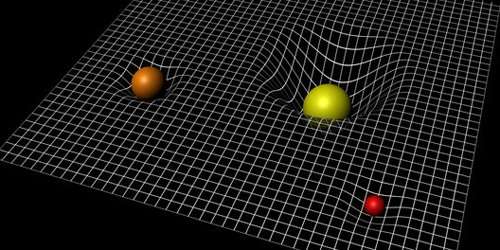November 20, 2017 report
Separate experiments show no evidence of violation of Lorentz invariance

(Phys.org)—Two teams of researchers working independently of one another have conducted experiments designed to test Lorentz invariance; both report no violations. One of the teams used decades of data from lunar lasing experiments, the other data from experiments conducted over several years using superconducting gravimeters. Both teams have published papers in the journal Physical Review Letters describing their work and their findings.
When physicists conduct relativistic experiments that involve physical measurement, their findings should not rely on the orientation or speed of the place in which the experiments take place, according to the standard model of particle physics. This principle is known as Lorentz invariance, and testing it is one of the ways of testing the theory of relativity itself. In this new effort, both research teams have tested the principle with the tightest constraints to date and both offer more accuracy than has been seen in the past.
One of the groups, with team members from Italy, France and U.S., used a half-century's worth of data collected via lunar lasing—bouncing a beam off a mirror left on the moon's surface by manned Apollo missions. The data represents measurements of the moon's orbit around the Earth as well as its rotation. Using the data, they found it consistent with null coefficients, which meant no violations of Lorentz invariance were found. They also report that their study offered accuracy between 100 and 1000 times better than was possible in previous efforts.
The other group was made up of researchers at Carleton College in the U.S. They obtained data from other teams working over several years using superconducting gravimeters to conduct experiments. Such meters can be used to calculate gravitational acceleration by measuring the position of a superconducting sphere as it is levitated in a magnetic field. This team also reported that the coefficients they derived were all consistent with zero. They further note that their efforts were 10 times as accurate as prior efforts and that some of the results were the first of their kind ever obtained.
By placing ever tighter constraints when testing physics theories, researchers offer stronger proof that the principles that underlie basic theories such as relativity are sound.
More information: 1. A. Bourgoin et al. Lorentz Symmetry Violations from Matter-Gravity Couplings with Lunar Laser Ranging, Physical Review Letters (2017). DOI: 10.1103/PhysRevLett.119.201102 , arxiv.org/abs/1706.06294
ABSTRACT
The standard-model extension (SME) is an effective field theory framework aiming at parametrizing any violation to the Lorentz symmetry (LS) in all sectors of physics. In this Letter, we report the first direct experimental measurement of SME coefficients performed simultaneously within two sectors of the SME framework using lunar laser ranging observations. We consider the pure gravitational sector and the classical point-mass limit in the matter sector of the minimal SME. We report no deviation from general relativity and put new realistic stringent constraints on LS violations improving up to 3 orders of magnitude previous estimations.
2. Natasha A. Flowers et al. Superconducting-Gravimeter Tests of Local Lorentz Invariance, Physical Review Letters (2017). DOI: 10.1103/PhysRevLett.119.201101 , arxiv.org/abs/1612.08495
ABSTRACT
Superconducting-gravimeter measurements are used to test the local Lorentz invariance of the gravitational interaction and of matter-gravity couplings. The best laboratory sensitivities to date are achieved via a maximum-reach analysis for 13 Lorentz-violating operators, with some improvements exceeding an order of magnitude.
Journal information: Physical Review Letters
© 2017 Phys.org


















